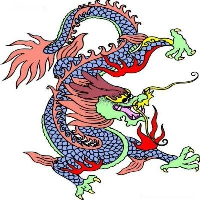The results of the computer grade examination are generally released about one month after the examination, and the query time of the national computer grade examination results in December 2022 is expected to be released in January next year. Candidates can log on to the China Education Examination Network, enter their ID card number, name and verification code when applying for the examination, and click the query button to query the results of the computer grade examination.
Query steps of computer grade examination scores
1. Select the time and subject of computer level examination.
2. Enter the ID number and name (ID number is case sensitive) when applying for the exam, and click the query button to query.
3. If the input information is correct, the score information of the corresponding computer grade exam will be listed on the next page.
4. The orange font in the operation steps at the top of the page indicates your query location.
The computer grade examination adopts the hundred mark system, but the examinee's score is notified by the grade. The scores of computer grade examination are divided into four grades: "Fail", "Pass", "Good" and "Excellent". 100-90 points are "Excellent", 89-80 points are "Good", 79-60 points are "Pass", and 59-0 points are "Fail".
How many levels are there in the computer grade examination
The first level of computer grade examination is positioned to meet people's application of computers in general work, with the focus on the assessment of operating ability.
Assessment content of computer grade examination: Grade I MSOffice, Grade I WPSOffice, Grade I B. Among the first level subjects of computer grade examination, the operating system version is Windows2000, the MSOffice version is Office2000, and the WPSOffice version is 2003. The paper and pencil examination of the first level subjects will be canceled, and the computer exam will be completely adopted.
The second level of computer grade examination is positioned as a computer programmer, which can be called "computer blue collar". Assessment content: According to the application nature and subject characteristics, the existing subjects are divided into language programming (C, C++, Java, Visual Basic) and database programming (Visual Foxpro, Access).
The examination form of all subjects in Computer Rank Examination Level II remains unchanged, including written examination and computer test. The running platform of computer level examination for all subjects of computer level two is Access2000 JavaJDK1.4.0、VisualBasic6.0、VisualFoxpro6.0、TurboC2.0。
The third level of computer grade examination is positioned as "development engineer", focusing on design, management, testing and technology. The third level of computer grade examination is divided into four categories: "PC technology", "information management technology", "database technology", and "network technology". It mainly examines the basic functions of the development and maintenance of application systems in the corresponding categories.

